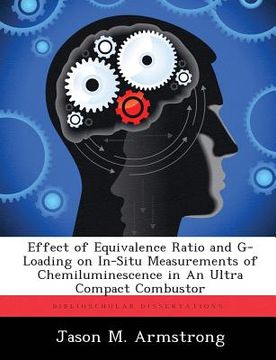Share
Effect of Equivalence Ratio and G-Loading on In-Situ Measurements of Chemiluminescence in An Ultra Compact Combustor (in English)
Jason M. Armstrong
(Author)
·
Biblioscholar
· Paperback
Effect of Equivalence Ratio and G-Loading on In-Situ Measurements of Chemiluminescence in An Ultra Compact Combustor (in English) - Armstrong, Jason M.
$ 48.80
$ 57.95
You save: $ 9.15
Choose the list to add your product or create one New List
✓ Product added successfully to the Wishlist.
Go to My WishlistsIt will be shipped from our warehouse between
Monday, July 01 and
Tuesday, July 02.
You will receive it anywhere in United States between 1 and 3 business days after shipment.
Synopsis "Effect of Equivalence Ratio and G-Loading on In-Situ Measurements of Chemiluminescence in An Ultra Compact Combustor (in English)"
Using a spectrometer and high temperature fiber optics the relative intensities of the near-infrared, visible and ultraviolet radiation emitted from the C2*, CH*, and OH* radicals were measured at eight discrete locations within the Ultra Compact Combustor test rig. Blackbody radiation in the near infrared was also observed. The tests were conducted at various g-loadings and overall equivalence ratios and with various air hole configurations. These measurements were compared to determine the effect of these changes on the radiatio n emitted. Local C2* intensities were used to estimate the flame location within the combustor and the local CH*/OH* ratio was used as a gauge of the local equivalence ratio within the cavity. Results indicate the highest ratios of CH*/OH* occur in the outer radius of the cavity where the high g-loads transport the colder unreacted fuel and air. The highest C2* ratios also occur in the outer radius. A correlation between cavity equivalence ratio and C2*/OH* was determined for these experiments as well. Fuel droplet size characterization was also conducted using a laser diffraction particle size analyzer. The same pressure atomizer used in the Ultra Compact Combustor test rig was used. Fuel flow conditions simulated the same fuel flow conditions as the test rig. Experiments indicated poor atomization at the lower overall fuel to air ratio test conditions since the fuel flow pressure is relatively low at these test conditions. Combustion efficiencies were also some of the lowest efficiencies measured for these test conditions, which is indicative of poor fuel atomization. All experiments were completed in the Air Force Research Laboratory's Atmospheric Combustion Research Facility at Wright-Patterson AFB. This research supports compact common iv core initiatives of the Versatile, Affordable, Advanced Turbine Engine (VAATE) program.
- 0% (0)
- 0% (0)
- 0% (0)
- 0% (0)
- 0% (0)
All books in our catalog are Original.
The book is written in English.
The binding of this edition is Paperback.
✓ Producto agregado correctamente al carro, Ir a Pagar.

